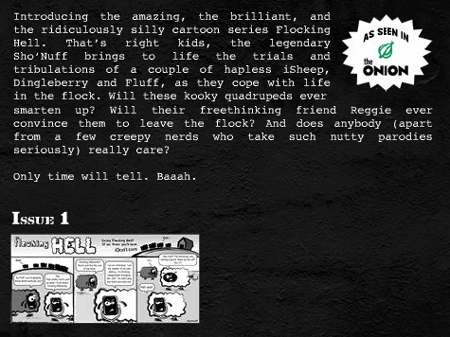In a prior post I had mused that podcasts are disruptive of established business models, but not yet an economically viable alternative to them. Since then, I have watched a favorite podcast go more mainstream. But don’t get your hopes up. This move to a better neighborhood, in terms of legitimacy and distribution, in no way guarantees a huge financial payback for its producers or the podcast advertisers supporting it. With this news, which I will get to in a moment, I was still waiting for a true breakthrough — something that will spell real, hard cash for the podcaster, in a way that cannot be ignored or discounted.
Then I learned of an ingenious way that Kevin Smith, the writer, director and co-star of the cult movie hit Clerks and its soon-to-be-released sequel, Clerks II, has found to turn a podcast into heavy incremental box office sales.
First, let me tell you about that first development. It’s the move of Filmspotting (formerly Cinecast), the web’s best film review podcast, to WBEZ Chicago Public Radio. Other star programming from WBEZ, such as This American Life, has already gone from a radio broadcast to a streaming audio product, sold through Audible.com and iTunes. It appears that Filmspotting will be taking a reverse path: I’m guessing it will gradually go from a free audio product to a radio broadcast and perhaps, a podcast only available by subscription through Audible.com and iTunes.
Filmspotting has sponsors now, primarily the Honda Fit and Peerflix. What will happen to them as Filmspotting goes Public (with a capital P) is just another question I can’t answer. Can anyone comment with more information?
The one aspect I can speak to with a reasonable level of confidence is this. As much as I respect and enjoy the programming of Public Radio, I know it is not the path to riches, either for its producers or its sponsors. As I’ve suggested earlier, though, the big wins of mass media exposure, and the hefty rates that advertisers will pay to achieve these wins, may simply be a thing of the past.
But wait. Perhaps the riches won through podcasting will come from skillful integration with other media. Which brings me back to Kevin “Potty-mouth” Smith. Okay, that’s my nickname for him, but I introduce it with this warning: His movies can be extremely vulgar and prurient. Like John Waters before him, he pushes boundaries of taste and subject matter, and I’m sure Clerks II will be no exception.
This film, which received a strong positive reaction from the audience attending its midnight showing at this year’s Cannes Film Festival, has two big things going for it: A built-in cult following that every film franchise needs, and a creator who has proved he can still surprise and entertain. For these reasons the film is almost certainly going to do well when it opens in theaters. What’s more, I suspect many fans of the original will come back for a second or third viewing. Did I say suspect? No, I know they’ll be back, consuming even more overpriced concessions and generating even more positive buzz and cash for its distributors.
Clerks II will be helped significantly by a brilliant interactive ploy.
A commentary by Mr. Smith and others close to the production will be produced in the standard DVD audio commentary format. By that I mean, it will run as long as the film, and provide real-time, behind-the-scenes color commentary. But instead of fans waiting for the DVD to come out to enjoy this narrative, they will be able download it as a podcast from iTunes, just in time for the film’s theatrical release. I can’t imagine there will be a cost to this download, but that’s not the point.
The message to fans will be: Enjoy Clerks II the first time as you normally would, then return to the theaters with your iPod or other MP3 player, for a second viewing and a new perspective.
I love two things about this tactic. It is both measurable and viral. Theater owners will be able to visually scan their audiences, and know exactly who has come back for the commentary. White iPod earbuds are hard to miss. Those earbuds are also the main driver of the viral aspect of this tactic.
Let’s say I’m in the audience to see the film. If I see people listening to the commentary and enjoying the theatrical experience just as much – or more — as I am (and, I’m sure, laughing at things that don’t sync up with the film’s laugh lines, because of the podcast’s banter), I am going to find out how I can become a member of the initiated. Yes, I too will seriously consider coming back for a new way to enjoy the film. What’s most exciting is I’ll consider doing this even if I’m only a so-so fan, which is precisely what I am, as a matter of fact.
And what was spent for this surefire sales driver? Almost nothing. Which, not surprisingly, was exactly the production budget of the original Clerks — that audacious and obscene raspberry by Mr. Smith directed at the Hollywood status quo.
